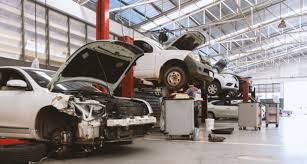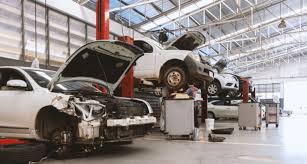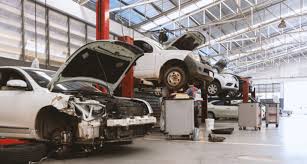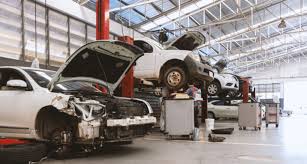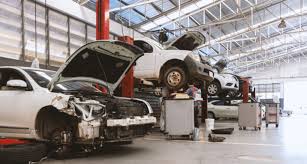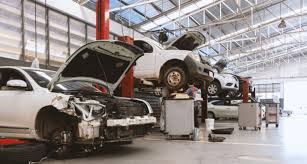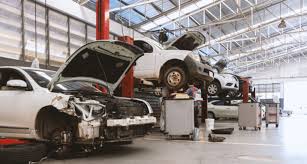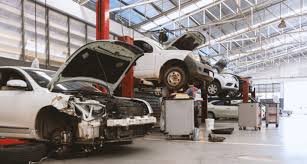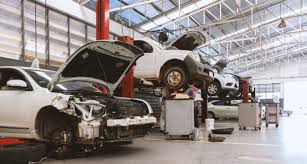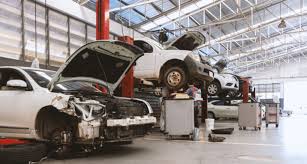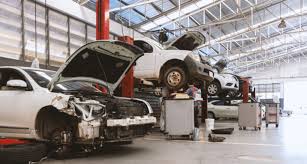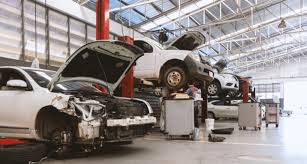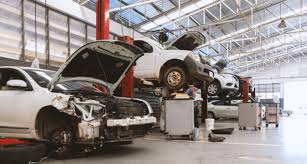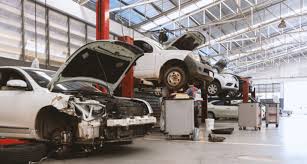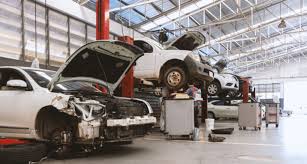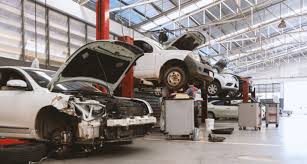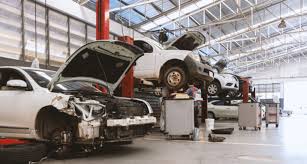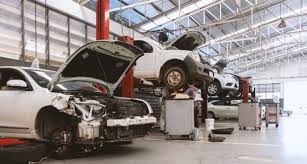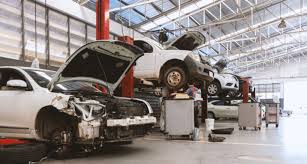Car Body Shop Environmental Liability Insurance: Paint & Chemical Protection
Car body shops operate in a complex environmental landscape where paint fumes, chemical solvents, and hazardous waste disposal create significant liability risks. Environmental liability insurance has become essential protection for automotive repair businesses facing increasingly stringent regulations and potential cleanup costs that can reach hundreds of thousands of pounds.
Understanding Environmental Liability in Car Body Shops
Environmental liability insurance protects car body shops against claims arising from pollution incidents, contamination events, and regulatory violations. Unlike general liability insurance, environmental coverage specifically addresses risks associated with hazardous substances commonly used in automotive refinishing operations.
Car body shops handle numerous environmentally sensitive materials daily, including paint thinners, primers, clearcoats, and cleaning solvents. These substances can cause soil contamination, groundwater pollution, and air quality violations if not properly managed. Environmental liability insurance provides crucial financial protection when accidents occur or regulatory compliance issues arise.
The automotive refinishing industry faces unique environmental challenges due to volatile organic compounds (VOCs) in paints and solvents. These chemicals can migrate beyond shop premises, affecting neighboring properties and creating liability exposure that extends far beyond the immediate business location.
Key Environmental Risks in Car Body Shop Operations
Paint and Solvent Contamination
Paint overspray and solvent spills represent primary environmental concerns for car body shops. Modern automotive paints contain heavy metals, VOCs, and other hazardous components that can contaminate soil and groundwater if released into the environment. Even small spills can create significant cleanup obligations under environmental regulations.
Spray booth operations generate paint mist and solvent vapors that require proper containment and disposal. Inadequate ventilation systems or filter maintenance can lead to environmental releases that trigger regulatory enforcement actions and third-party claims.
Chemical Storage and Handling
Car body shops typically store large quantities of paints, thinners, and cleaning chemicals on-site. Improper storage practices, container failures, or handling accidents can result in environmental contamination requiring expensive remediation efforts.
Underground storage tanks for waste solvents present particular risks, as leaks may go undetected for extended periods while contaminating surrounding soil and groundwater. Environmental liability insurance helps cover investigation and cleanup costs associated with storage system failures.
Waste Disposal Compliance
Automotive refinishing generates various hazardous waste streams, including spent solvents, paint sludge, and contaminated materials. Improper disposal practices can create long-term environmental liabilities, particularly when waste is sent to facilities that later become contaminated sites.
The "cradle-to-grave" liability principle means car body shops remain responsible for their waste even after proper disposal. If waste disposal facilities experience contamination problems, generators may face cleanup obligations and third-party claims.
Regulatory Framework and Compliance Requirements
Environmental Permitting
Car body shops must obtain appropriate environmental permits for air emissions, waste management, and chemical storage. Permit violations can result in enforcement actions, fines, and orders requiring expensive compliance measures.
Environmental liability insurance helps cover costs associated with permit violations, including legal defense expenses, regulatory fines, and required remediation activities. Coverage extends to both sudden pollution events and gradual contamination discovered during routine inspections.
Air Quality Regulations
VOC emissions from automotive refinishing operations are subject to strict air quality regulations. Car body shops must implement emission control systems, maintain detailed records, and comply with usage limitations for various paint and solvent products.
Non-compliance with air quality requirements can trigger enforcement actions requiring installation of additional control equipment, process modifications, or operational restrictions. Environmental insurance helps manage these compliance costs while protecting business continuity.
Waste Management Requirements
Hazardous waste regulations impose detailed requirements for waste characterization, storage, transportation, and disposal. Car body shops must maintain comprehensive documentation and work with licensed waste management contractors to ensure compliance.
Violations of waste management requirements can result in significant penalties and cleanup obligations. Environmental liability insurance provides essential protection against these regulatory risks while covering associated legal and remediation expenses.
Types of Environmental Liability Coverage
Pollution Legal Liability
Pollution legal liability coverage protects against claims arising from pollution conditions at the insured premises. This includes both sudden and gradual pollution events that result in bodily injury, property damage, or cleanup obligations.
For car body shops, pollution legal liability coverage addresses contamination from paint spills, solvent releases, and other chemical incidents. Coverage applies to on-site cleanup costs, third-party property damage, and bodily injury claims resulting from pollution exposure.
Contractors Pollution Liability
Car body shops performing off-site work, such as fleet maintenance or mobile repair services, need contractors pollution liability coverage. This protection addresses pollution incidents occurring away from the primary business location during professional services.
Mobile paint operations present unique environmental risks, as work occurs at customer locations without the controlled environment of a dedicated spray booth. Contractors pollution liability insurance provides essential protection for these expanded service offerings.
Environmental Impairment Liability
Environmental impairment liability coverage protects against claims arising from environmental conditions that may have existed before policy inception. This coverage is particularly valuable for car body shops operating in older facilities with potential historical contamination.
Pre-existing contamination can create ongoing liability exposure, particularly if conditions worsen or migrate to neighboring properties. Environmental impairment liability insurance helps manage these legacy risks while protecting business operations.
Coverage Components and Policy Features
First-Party Coverage
First-party environmental coverage pays for cleanup costs at the insured premises, including soil remediation, groundwater treatment, and waste disposal expenses. This coverage is essential for car body shops facing contamination from operational activities.
Coverage typically includes emergency response costs, environmental consulting fees, and ongoing monitoring expenses. First-party protection ensures car body shops can address contamination promptly without depleting business resources.
Third-Party Liability
Third-party environmental liability coverage protects against claims from neighboring property owners, regulatory agencies, and other parties affected by pollution from car body shop operations. This includes bodily injury claims, property damage, and natural resource damages.
Coverage extends to legal defense costs, settlement expenses, and court-awarded damages. Third-party protection is crucial for car body shops operating in commercial or residential areas where pollution incidents could affect multiple parties.
Regulatory Coverage
Regulatory coverage addresses costs associated with government enforcement actions, including fines, penalties, and required remediation activities. This protection helps car body shops manage compliance costs while maintaining regulatory relationships.
Coverage includes legal representation during enforcement proceedings, technical consulting services, and costs associated with compliance orders. Regulatory protection ensures car body shops can address violations professionally while minimizing business disruption.
Pollution Prevention and Risk Management
Best Practices for Chemical Handling
Implementing proper chemical handling procedures reduces environmental liability exposure while improving workplace safety. Car body shops should establish written protocols for paint mixing, solvent use, and waste management activities.
Secondary containment systems for chemical storage areas prevent spills from reaching the environment. Regular inspections of storage containers, transfer equipment, and containment systems help identify potential problems before they become environmental incidents.
Spray Booth Management
Proper spray booth operation and maintenance are essential for controlling paint emissions and preventing environmental contamination. Regular filter changes, ventilation system maintenance, and booth cleaning reduce pollution risks while ensuring regulatory compliance.
Overspray capture systems should be properly sized and maintained to prevent paint particles from escaping the controlled environment. Documentation of maintenance activities demonstrates commitment to environmental protection and regulatory compliance.
Waste Minimization Strategies
Implementing waste minimization practices reduces environmental liability exposure while lowering disposal costs. Car body shops can adopt efficient paint mixing procedures, solvent recycling systems, and material substitution strategies to minimize hazardous waste generation.
Proper inventory management prevents paint and solvent deterioration, reducing waste disposal requirements. Training staff on efficient material usage and waste segregation practices supports environmental protection while improving operational efficiency.
Claims Examples and Case Studies
Groundwater Contamination Case
A car body shop experienced groundwater contamination from a leaking underground solvent storage tank. The contamination affected neighboring properties and required extensive remediation efforts costing over £200,000.
Environmental liability insurance covered investigation costs, remediation expenses, and third-party property damage claims. The coverage enabled the business to address the contamination professionally while maintaining operations during the cleanup process.
Air Emission Violation
A car body shop received enforcement action for exceeding VOC emission limits during peak production periods. The violation required installation of additional emission control equipment and payment of regulatory fines.
Environmental insurance covered legal defense costs, regulatory fines, and equipment installation expenses. The coverage helped the business achieve compliance while minimizing financial impact on operations.
Paint Spill Incident
A paint mixing accident resulted in significant floor contamination and potential soil impact at a car body shop. Emergency response and cleanup costs exceeded £50,000, with additional expenses for environmental monitoring.
First-party environmental coverage paid for emergency response, cleanup activities, and ongoing monitoring requirements. The coverage enabled prompt response to minimize environmental impact while protecting business assets.
Selecting Appropriate Coverage Limits
Assessing Exposure Levels
Car body shops should evaluate their environmental exposure based on chemical usage volumes, storage practices, and operational complexity. Facilities handling large quantities of hazardous materials require higher coverage limits to address potential contamination scenarios.
Location factors, including proximity to sensitive receptors and groundwater resources, influence appropriate coverage levels. Urban locations with nearby residential or commercial properties may require enhanced coverage limits to address third-party liability exposure.
Coverage Limit Considerations
Environmental cleanup costs can escalate quickly, particularly when groundwater contamination or off-site migration occurs. Car body shops should consider coverage limits that reflect realistic cleanup scenarios rather than minimum regulatory requirements.
Third-party liability exposure may exceed cleanup costs, particularly in cases involving bodily injury claims or business interruption losses. Comprehensive coverage limits should address both first-party cleanup costs and third-party liability exposure.
Deductible Structures
Environmental liability policies typically include deductibles that apply to each claim or occurrence. Car body shops should balance premium costs with acceptable retention levels based on their financial capacity and risk tolerance.
Higher deductibles reduce premium costs but increase out-of-pocket expenses during claims. Businesses should consider their cash flow capacity and risk management capabilities when selecting deductible levels.
Integration with Other Insurance Coverages
General Liability Coordination
Environmental liability insurance works alongside general liability coverage to provide comprehensive protection. While general liability policies typically exclude pollution-related claims, environmental coverage fills this gap for car body shops.
Coordination between policies ensures seamless coverage without gaps or overlaps. Car body shops should work with experienced insurance professionals to structure comprehensive protection addressing all operational risks.
Property Insurance Considerations
Environmental contamination can affect property values and require specialized cleanup procedures. Car body shops should ensure their property insurance coordinates with environmental coverage to address contamination-related property damage.
Some property policies include limited pollution coverage, while others exclude environmental risks entirely. Understanding coverage interactions helps ensure adequate protection for all potential scenarios.
Workers' Compensation Integration
Environmental incidents may result in employee exposure to hazardous substances, creating workers' compensation claims. Car body shops should ensure their workers' compensation coverage coordinates with environmental liability insurance to address occupational exposure risks.
Proper coordination prevents coverage gaps while ensuring employees receive appropriate medical care and benefits following environmental incidents.
Working with Environmental Insurance Specialists
Broker Selection Criteria
Car body shops should work with insurance brokers who understand environmental risks in the automotive refinishing industry. Specialized knowledge of regulatory requirements, contamination scenarios, and coverage options is essential for proper protection.
Experienced brokers can help structure appropriate coverage limits, coordinate with other insurance policies, and provide ongoing risk management support. Industry expertise ensures car body shops receive comprehensive protection tailored to their specific operations.
Claims Management Support
Environmental claims require specialized expertise to manage effectively. Car body shops should ensure their insurance program includes access to environmental consultants, legal specialists, and remediation contractors.
Prompt claims reporting and professional management minimize environmental impact while controlling costs. Experienced claims handlers understand regulatory requirements and can coordinate with government agencies to achieve efficient resolution.
Risk Assessment Services
Many environmental insurance providers offer risk assessment services to help car body shops identify potential exposures and implement preventive measures. These services provide valuable insights into operational risks while supporting insurance underwriting.
Regular risk assessments help maintain appropriate coverage levels while identifying opportunities for risk reduction. Proactive risk management demonstrates commitment to environmental protection while potentially reducing insurance costs.
Conclusion
Environmental liability insurance provides essential protection for car body shops facing increasing regulatory scrutiny and potential contamination risks. Paint and chemical handling operations create unique environmental exposures that require specialized insurance coverage beyond traditional general liability policies.
Comprehensive environmental protection includes pollution legal liability, contractors coverage, and regulatory protection tailored to car body shop operations. Proper coverage limits, coordinated with other insurance policies, ensure adequate protection against environmental risks while supporting business continuity.
Working with experienced insurance professionals who understand automotive refinishing risks is crucial for developing appropriate environmental protection. Regular risk assessments, combined with effective prevention practices, help minimize environmental exposure while maintaining comprehensive insurance coverage.
Car body shops that invest in proper environmental liability insurance demonstrate commitment to responsible operations while protecting their business assets and community relationships. This protection enables continued growth and success in an increasingly regulated industry environment.


 0330 127 2333
0330 127 2333
